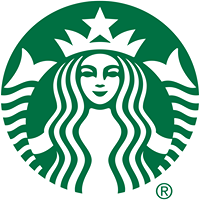The Blue Screen of Death: A Global Wake-Up Call** **
July 25, 2024, 10:45 am

Location: United States, California, San Francisco
Employees: 1001-5000
Founded date: 2011

Location: United States, California, Sunnyvale
Employees: 1001-5000
Founded date: 2011
Total raised: $476M
**
On July 19, 2024, a digital storm swept across the globe. Microsoft, a titan in the tech world, faced a catastrophic outage. The culprit? A faulty software update from CrowdStrike, a cybersecurity firm. The result was chaos. The infamous "blue screen of death" (BSOD) reared its ugly head, haunting Windows users everywhere. This was not just a tech glitch; it was a wake-up call for businesses and consumers alike.
The blue screen, a sight feared by many, signifies a serious problem. It’s a digital warning sign, a red flag waving in the face of users. For decades, it has been a symbol of frustration. When it appears, it means one thing: your computer is down. The BSOD is a stark reminder of our reliance on technology. When it fails, the ripple effects can be devastating.
Airlines, banks, healthcare providers, and even Starbucks felt the impact. Travelers were stranded. Patients faced canceled surgeries. Coffee lovers were left without their morning fix. The outage was a digital domino effect, toppling industries and disrupting lives. Social media buzzed with complaints. Customers shared their frustrations as they tried to navigate a world suddenly devoid of their usual conveniences.
The blue screen was not just a visual annoyance; it was a signal of deeper issues. Microsoft described it as a "STOP code error." This term may sound technical, but it encapsulates a fundamental problem: systems are vulnerable. The reliance on a single software update can lead to widespread chaos. In a world where everything is interconnected, a single failure can send shockwaves through the entire system.
Microsoft's response was swift. They advised users to restore their systems to a "known good state." This meant rolling back to a previous version of Windows before the faulty update. For many, this was a daunting task. The idea of navigating through complex settings and options can be overwhelming. Yet, it was a necessary step to regain control.
The recovery process was not straightforward. Users were warned they might need to reboot their machines multiple times. Imagine being stuck in a loop, like a hamster on a wheel, going nowhere fast. This scenario played out for countless users, each reboot a flicker of hope. Some found success, while others remained trapped in the digital abyss.
As the day unfolded, the scale of the outage became clearer. Major airports displayed the blue screen on their monitors. The sight was jarring. A digital billboard in Times Square echoed the chaos, displaying the BSOD for all to see. It was a public spectacle, a reminder of our vulnerability in a tech-driven world.
Starbucks, a staple for many, faced its own challenges. The coffee chain's mobile ordering app went dark. Customers, accustomed to the convenience of ordering ahead, were left in the lurch. Some stores couldn't open, disrupting daily routines. The irony was palpable. In a world where technology is meant to simplify life, it had instead complicated it.
Social media became a platform for shared experiences. Users vented their frustrations, expressing disbelief at the scale of the outage. One user lamented the loss of their morning coffee ritual, highlighting the emotional connection people have with their daily routines. The outage was more than a technical failure; it was a disruption of normalcy.
As businesses scrambled to restore services, the question lingered: how did this happen? The reliance on third-party software raises concerns. In an age where technology is omnipresent, the stakes are high. A single misstep can lead to widespread chaos. Companies must reassess their dependencies and consider the implications of such outages.
The incident serves as a reminder of the fragility of our digital infrastructure. As we become more reliant on technology, the risks increase. Businesses must invest in robust systems and contingency plans. The blue screen of death is not just a technical issue; it’s a call to action. It’s a signal that we must be prepared for the unexpected.
In the aftermath, Microsoft and CrowdStrike are under scrutiny. Users demand answers. How can such a significant failure occur? What measures are in place to prevent future outages? Transparency is crucial. Companies must communicate openly with their customers, rebuilding trust in the wake of chaos.
The blue screen of death is more than a glitch; it’s a metaphor for our times. It symbolizes the challenges of a digital age. As we navigate this landscape, we must remain vigilant. Technology is a double-edged sword. It can empower us, but it can also bring us to our knees.
In conclusion, the events of July 19, 2024, serve as a stark reminder. The blue screen of death is not just a nuisance; it’s a wake-up call. As we move forward, let’s learn from this experience. Let’s build a more resilient digital future. One where the blue screen is a relic of the past, not a recurring nightmare.
On July 19, 2024, a digital storm swept across the globe. Microsoft, a titan in the tech world, faced a catastrophic outage. The culprit? A faulty software update from CrowdStrike, a cybersecurity firm. The result was chaos. The infamous "blue screen of death" (BSOD) reared its ugly head, haunting Windows users everywhere. This was not just a tech glitch; it was a wake-up call for businesses and consumers alike.
The blue screen, a sight feared by many, signifies a serious problem. It’s a digital warning sign, a red flag waving in the face of users. For decades, it has been a symbol of frustration. When it appears, it means one thing: your computer is down. The BSOD is a stark reminder of our reliance on technology. When it fails, the ripple effects can be devastating.
Airlines, banks, healthcare providers, and even Starbucks felt the impact. Travelers were stranded. Patients faced canceled surgeries. Coffee lovers were left without their morning fix. The outage was a digital domino effect, toppling industries and disrupting lives. Social media buzzed with complaints. Customers shared their frustrations as they tried to navigate a world suddenly devoid of their usual conveniences.
The blue screen was not just a visual annoyance; it was a signal of deeper issues. Microsoft described it as a "STOP code error." This term may sound technical, but it encapsulates a fundamental problem: systems are vulnerable. The reliance on a single software update can lead to widespread chaos. In a world where everything is interconnected, a single failure can send shockwaves through the entire system.
Microsoft's response was swift. They advised users to restore their systems to a "known good state." This meant rolling back to a previous version of Windows before the faulty update. For many, this was a daunting task. The idea of navigating through complex settings and options can be overwhelming. Yet, it was a necessary step to regain control.
The recovery process was not straightforward. Users were warned they might need to reboot their machines multiple times. Imagine being stuck in a loop, like a hamster on a wheel, going nowhere fast. This scenario played out for countless users, each reboot a flicker of hope. Some found success, while others remained trapped in the digital abyss.
As the day unfolded, the scale of the outage became clearer. Major airports displayed the blue screen on their monitors. The sight was jarring. A digital billboard in Times Square echoed the chaos, displaying the BSOD for all to see. It was a public spectacle, a reminder of our vulnerability in a tech-driven world.
Starbucks, a staple for many, faced its own challenges. The coffee chain's mobile ordering app went dark. Customers, accustomed to the convenience of ordering ahead, were left in the lurch. Some stores couldn't open, disrupting daily routines. The irony was palpable. In a world where technology is meant to simplify life, it had instead complicated it.
Social media became a platform for shared experiences. Users vented their frustrations, expressing disbelief at the scale of the outage. One user lamented the loss of their morning coffee ritual, highlighting the emotional connection people have with their daily routines. The outage was more than a technical failure; it was a disruption of normalcy.
As businesses scrambled to restore services, the question lingered: how did this happen? The reliance on third-party software raises concerns. In an age where technology is omnipresent, the stakes are high. A single misstep can lead to widespread chaos. Companies must reassess their dependencies and consider the implications of such outages.
The incident serves as a reminder of the fragility of our digital infrastructure. As we become more reliant on technology, the risks increase. Businesses must invest in robust systems and contingency plans. The blue screen of death is not just a technical issue; it’s a call to action. It’s a signal that we must be prepared for the unexpected.
In the aftermath, Microsoft and CrowdStrike are under scrutiny. Users demand answers. How can such a significant failure occur? What measures are in place to prevent future outages? Transparency is crucial. Companies must communicate openly with their customers, rebuilding trust in the wake of chaos.
The blue screen of death is more than a glitch; it’s a metaphor for our times. It symbolizes the challenges of a digital age. As we navigate this landscape, we must remain vigilant. Technology is a double-edged sword. It can empower us, but it can also bring us to our knees.
In conclusion, the events of July 19, 2024, serve as a stark reminder. The blue screen of death is not just a nuisance; it’s a wake-up call. As we move forward, let’s learn from this experience. Let’s build a more resilient digital future. One where the blue screen is a relic of the past, not a recurring nightmare.

